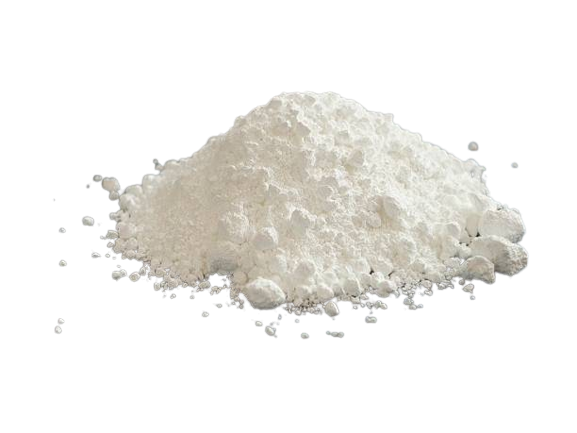Lithopone
Lithopone is a mixture of inorganic compounds, widely used as a white pigment powder. It is composed of a mixture of barium sulfate and zinc sulfide. These insoluble compounds blend well with organic compounds and confer opacity. It was made popular by the cheap production costs, greater coverage.

- Overview
- Application
- Spesification
Overview
Lithopone is prepared by coprecipitation of barium sulfate and zinc sulfide. Most commonly coprecipitation is effected by combining equimolar amounts of zinc sulfate and barium sulfide:
BaS + ZnSO4→ ZnS · BaSO4
Variations exist, for example, more ZnS-rich materials are produced when zinc chloride is added to the mixture of zinc sulfate and barium sulfide. Lithopone was discovered in the 1870s by DuPont. The material came in different forms, which varied in the content of zinc sulfide. Although barium sulfate is almost completely inert, zinc sulfide degrades upon exposure to UV light, leading to darkening of the pigment. The severity of this UV reaction is dependent on a combination of two factors; how much zinc sulfide makes up the pigments formulation, and its total accumulated UV exposure. Depending on these factors the pigment itself can vary in shade over time, ranging from pure white all the way to grey or even black. The cobalt salts, added as dopants, help to stabilize zinc sulfide so it will not have as severe a reaction to UV exposure.
Application
- Lithopone is a co-precipitated zinc sulfide and barium sulfate combination, which can act as a cost-effective alternative for TiO2.
- A combination of lithopone and TiO2 can help reduce lacing and deliver an improvement in mechanical properties including higher ultimate elongation and impact strength.
- It is used as a base for lake pigment and used as an inert pigment for paint, ink and cosmetics as well as in a large range of applications in plastic industry.
- It is used as a filler in paper, leather, and linoleum.
- Lithopone helps to beautify and customize homes by adding light stability, color retention, and opacity to laminates used in flooring, furniture, and beyond.
- It is also used in plastics applications—including packaging, agricultural, transportation, medical, household appliances, and more—maintain their appearance and strength with the help of TiO₂. It keeps products looking newer, longer and resist the damaging effects of UV light.
Spesification
| PRODUCT IDENTIFICATION | |
| CAS NO. | 1345-05-7 |
| EINECS NO. | 215-715-5 |
| FORMULA | ZnS·BaSO4 |
| MOL WT. | 330.80 |
| SYNONYMS | Zinc Baryta White; Zinc Sulfide White. |
| SALES SPECIFICATION | |
| APPEARANCE | White powder |
| CONTENT | 99.0% min |
| ZnS | 28.0% min or 30.0% min |
| ZnO | 0.5% max |
| pH | 6.8 – 7 |
| PARTICLE SIZE | 99.9% (<63 µm) |
| VOLATILE MATTER | 0.3% max |
| PHYSICAL AND CHEMICAL PROPERTIES | |
| PHYSICAL STATE | White powder |
| SPECIFIC GRAVITY | 4.3 |
| pH | Neutral |
| STABILITY | Stable under ordinary conditions |



